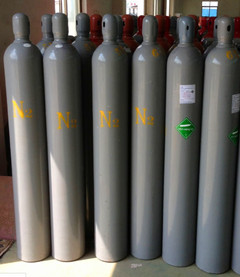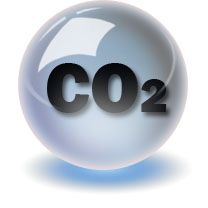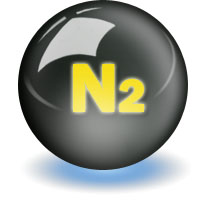联系粤佳
广州市谱源气体有限公司


安全知识-Gaseous Argon氩气
2008-8-23 11:49:00 [点击下载:2008823113122607.doc]
Gaseous argon is tasteless, colorless, odorless, non corrosive, and nonflammable. Argon belongs to the family of rare inert gases. It is the most plentiful of the rare gases making up approximately 1% of the earth’s atmosphere. It is monatomic and extremely inert, forming no known chemical compounds.
气态氩无味,无色,无嗅,无腐蚀性,不可燃。氩属于稀有惰性气体家族。它是最丰富的稀有气体,占地球空气的约1%。它是单原子,极不活泼,没有已知的化合物。
Special materials of construction are not required to prevent corrosion. Vessels and piping should be designed to American Society of Mechanical Engineers (ASME) or Department of Transportation (DOT) codes for the pressures and temperatures involved.
不要求特殊的建材来防止腐蚀。容器和管道系统要根据相关的压力和温度按照美国机械工程师协会(ASME)或交通部(DOT)的规定来设计。
Argon may be compressed into cylinders by water or oil-lubricated compressors or by dry compression systems. To determine the amount of argon in a cylinder, use the appropriate pressure and temperature capacity chart for a specific size cylinder. (The higher the pressure, the larger the amount of argon in the container.)
氩可以使用水或油润滑的压缩机或干压缩系统压缩进钢瓶。要确定钢瓶的氩容量,对于特定尺寸的钢瓶使用合适的压力和温度容量表。(压力越大,容器的氩容量越大)
Manufacture生产
Argon is produced by an air separation unit(ASU) through the liquefaction of atmospheric air and separation of the argon by continuous cryogenic distillation. The argon is then removed as a cryogenic liquid.
氩的生产使用空气分离装置(ASU),通过大气的液化和连续低温蒸馏分离出氩。随后,氩作为低温液体运输。
The ASU manufacturing process begins with a main air compressor and ends at the output of the product storage tanks. Air is compressed and sent through a clean-up system where moisture, carbon dioxide, and hydrocarbons are removed. The air then passes through heat exchangers where it is cooled to cryogenic temperature. The air then enters a high pressure distillation column where it is physically separated into a gaseous form of nitrogen at the top of the column and a liquid form of “crude” oxygen (~90%) at the bottom.
ASU生产过程从一个主气流压缩机开始,产品储存罐的输出后结束。空气通过一个去除了水蒸汽、二氧化碳和碳氢化合物的清洁系统压缩和输运。接着空气通过热交换器冷却到低温。随后空气进入高压分裂蒸馏塔,分离成气态氮和“原始”液氧(含大约90%的氧),氮蒸气在蒸馏塔顶部,液氧在蒸馏塔底部。
Argon is the major contaminant in this crude oxygen, which is then sent to a low-pressure distillation column where the oxygen is purified. The argon-rich waste stream from the low pressure column is sent to an argon distillation column. Some argon technologies distill the argon directly to its final manufacturing purity, while others utilize a separate step to purify it, for example, hydrogen deoxo. Purified argon is stored as a liquid in storage tanks at the site.
氩是原始氧中最大的杂质。接着把原始液氧送到低压分裂蒸馏塔净化。从低压塔流出的富氩废物被送到氩分裂蒸馏塔。某些氩技术直接把氩蒸馏到最终的生产纯度,而其它技术采用分离的步骤来净化它,例如氢脱氧。净化的氩以液态形式储存在现场的储存罐。







